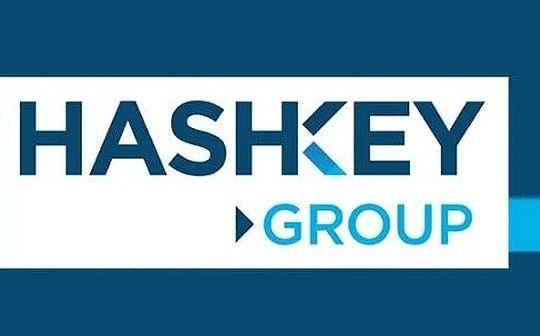
Author: Georgios Konstantopoulos, Paradigm research partner & amp; CTO; translation: bitchain: Xiaozou Xiaozou
We started to build RETH in 2022 to provide Ethereum L1 with elasticity while solving the execution layer expansion on L2.
Today, we are glad to share with you how the RETH plan in 2024 achieves 1GB GAS throughput per second, and how we can surpass this goal for a long -term roadmap.
We invite the entire ecosystem to together with us to jointly promote the performance cutting edge and strict benchmark test in the encryption field.
1. Have we achieved scale expansion?
If cryptocurrencies want to reach the global scale and avoid speculative behavior (as the main case), there is a very simple way: transactions must be low and fast.
1.1 How to measure performance?What is the GAS quantity per second?
Performance is usually measured by “number of transactions per second” (TPS).Especially for Ethereum and other EVM blockchains, a more delicate and more accurate measurement standard is “GAS quantity per second.”This indicator reflects the computing workload that can be processed per second. Among them, “GAS” is a unit that measures the calculation workload required for the operation of transactions or smart contracts.
The quantity per second is standardized as a performance indicator to better understand the capacity and efficiency of the blockchain.It also helps evaluate the cost effects of the system and prevent potential rejection service (DOS) attacks. These attacks may use less fine measurement methods.This indicator helps to compare the performance of the Ethereum virtual machine (EVM) and capable chain.
We recommend that the EVM community adopts the GAS quantity per second as the standard indicator, and at the same time combined with other GAS pricing dimensions to create a comprehensive performance standard.
1.2 Our development stage today
The amount of GAS per second is determined by removing the target GAS of each block by block time.In the table below, we show the current GAS throughput and delay of different EVM chains L1 and L2 (not detailed):

We emphasize that the amount of GAS per second is used to comprehensively evaluate the EVM network performance, while capturing calculation and storage costs at the same time.The networks such as Solana, SUI, or Aptos are not included due to their unique cost models.We encourage the cost models of all blockchain networks to achieve comprehensive and fair comparison.
We are developing a set of non -interrupted foundation testing tools for Reth to copy the real workload.Our requirements for nodes are in line with the TPC benchmark.
2. How does RETH reach 1GB GAS per second?Even higher?
Some of our motivations for the creation of Reth in 2022 are because we urgently need a client for Web Rollup.We think our forward road is full of hope.
During the real-time synchronization, Reth has reached 100-200MB GAS (including the sender recovery, Trie of the transaction and calculation of each block); so to achieve a short-term goal of our 1GB GAS per second, it needs to be expanded by 10 times.
With the development of RETH, our extension plan must find a balance between scalability and efficiency:
-
Vertical expansion: Our goal is to maximize the use of each “BOX” to give full play to its potential.By optimizing the way of processing transactions and data of each single system, we can greatly improve the overall performance, and at the same time make the operators of each node more efficient.
-
Horizontal expansion: Although optimized, the absolute transaction volume of the web size exceeds the processing capacity of any server.To cope with this situation, we consider deploying a horizontal expansion architecture, which is similar to the Kubernetes model of the blockchain node.This means that there are no nodes that can become bottlenecks without any node.
The optimization we are discussed here will not involve status growth solutions. This part of the content is separately discussed in other articles.The following is an overview of our plan to achieve this goal:

In the entire technology stack, we also optimized the IO and CPUs using the ACTOR model. All parts of the stack can be deployed as a service, and they are used finely.Finally, we are actively evaluating the alternative database, but it has not been determined.
2.1 Reth vertical extension roadmap
Our vertical extension goal is to maximize the performance and efficiency of the server or laptop that runs RETH.
(1) Even (just-in-time) EVM and AHEAD-OF-TIME EVM
In a blockchain environment like Ethereum virtual machine (EVM), the execution of bytecode is performed through the interpreter, and the interpreter handles the instructions in order.This method will bring a certain amount of expenses because it is not directly executed the native assembly instruction, but the operation performed through the VM layer.
Instant compilation (JIT) to solve this problem by converting the byte code into the native machine code before executing, thereby improving performance by bypassing the interpretation process of VM.This technology can compile the contract into optimized machine code in advance, which has been well used in other virtual machines such as Java and Webassembly.
However, JIT may be easily attacked by malicious code. The malicious code aims to use the JIT process vulnerability, or it cannot run in real time due to the slow speed during execution.RETH will compile the highest requirements for compiling (AOT) and store them on the disk to avoid the process of not being tried to abuse our native code compilation process during real -time execution.
We have been developing the JIT/AOT compiler for REVM, and we are currently integrated with Reth.We will open source immediately after completing the benchmark test in the next few weeks.On average, about 50%of the execution time is spent on the EVM interpreter, so it should require about 2 times that of EVM execution improvement, but when some calculation requirements are greater, the impact may be greater.In the next few weeks, we will share our benchmark test and integrate our own JIT EVM in Reth.

(2) Parallel EVM
The concept of parallel Ethereum virtual machine (Parallel EVM) supports multiple transactions at the same time, which is different from the traditional EVM serial execution model.We have the following two paths:
-
Historical synchronization: History synchronization can calculate the best parallel tune by analyzing historical transactions and identifying all historical state conflicts.
-
Real -time synchronization: For real -time synchronization, we can use technologies similar to Block STM to infer execution without any additional information (such as access list).This algorithm has poor performance during the severe state competition, so we hope to explore the switch between serial and parallel execution according to the workload status, and which storage SLOT will be accessed to improve parallel quality.
According to our historical analysis, about 80%of Ethereum storage SLOT is independent, which means that parallel can increase EVM execution efficiency by 5 times.

(3) Optimized state commitment
In the RETH model, calculating the status root is a process independent of transactions, allowing the use of standard KV storage that does not need to obtain Trie information.This currently requires & gt; 75%of the end -to -end time to seal a block, which is a very exciting field of optimization.
We have determined that the following two “easy win” channels can increase status roots performance by 2-3 times without any agreement changes:
-
Completely parallel state root: Now we only re -calculate the storage tree that has changed the account, but we can go further. When the storage roots are completed in the background, the account tree is calculated in parallel.
-
PIPELINED status root: During the execution process, the slot and account involved in the state root service are stored, and the intermediate Trie node is pre -made from the disk.
In addition, we can also deviate from Ethereum L1 status root activity to explore some forward paths:
-
Calculation of lower -frequency state roots: not calculated the status roots on each block, but calculated once every T block.This reduces the total time proportion of state roots in the entire system, which may be the simplest and most effective solution.
-
Tracking status roots: Rather than calculating the status root on the same block, it is better to let it fall behind several blocks.In this way, execution can be advanced without blocking the root calculation of the state.
-
Replace the RLP encoder & amp; KECCAK256: Compared to using RLP encoding, directly combine bytes and use faster hash functions (such as Blake3) may be lower.
-
Wider Trie: Add tree N-Rate sub-nodes to reduce IO enlarged due to the depth of Trie’s logn.
There are several questions here:
-
What is the above -mentioned changes on light clients, L2, Bridge, collaborators, and other secondary impacts of protocols that rely on frequent accounts and storage certificates?
-
Can we at the same time optimize the status commitment of SNARK proof and native execution speed?
-
With our existing tools, what is the most broad state promise we can get?What are the secondary effects on witness?
2.2 Horizontal expansion roadmap of reth
We will perform the above -mentioned multiple items throughout 2024 to achieve the goal of 1GB GAS per second.
However, vertical extensions will eventually encounter physical and practical restrictions.No machine can handle the computing needs of the world.We think there are two paths here to support us to expand by introducing more BOX after the load is enlarged:
(1) Multi Rollup Reth
Today’s L2 stack needs to run multiple services to track chains: L1 CL, L1 EL, L1 -& GT; L2 derived function (may be binded with L2 EL) and L2 EL.Although this is very good for modularization, the situation will become more complicated when running multiple node stacks.Imagine what if you have to run 100 rollups!
We hope to allow Rollup simultaneously during the development of RetH, and reduce the operating cost of thousands of Rollup to almost zero.
We have done this in our implementation expansion projects, and more progress will be made in the next few weeks.
(2) Yunyuan Reth
High -performance sorters may have a lot of demand on a single chain, they need to expand, and a machine does not meet its needs.This is impossible to deploy today’s single -node deployment.
We hope that we can support the running cloud nodes, deploy it as a service stack, automatically expand it according to the calculation requirements, and use the seemingly infinite cloud object storage to achieve lasting storage.This is a common architecture in the server database project (such as NeondB, Cockrochdb or Amazon Aurora).
3. Future prospects
We hope to gradually launch this route map to all RETH users.Our mission is to allow everyone to get a higher speed of 1GB GAS per second.We will conduct optimized tests on RETH ALPHANET, and we hope that people will use RETH as SDK to build optimized high -performance nodes.
We haven’t found the answer.
-
How does RETH help improve the performance of the entire L2 ecology?
-
How can we properly measure some of our worst situations that may occur in general?
-
How do we deal with potential differences between L1 and L2?
Many of these questions have no answers, but we have a lot of initial ideas with bright prospects, which can be busy for a while. We hope to see these efforts to make results in the next few months.







